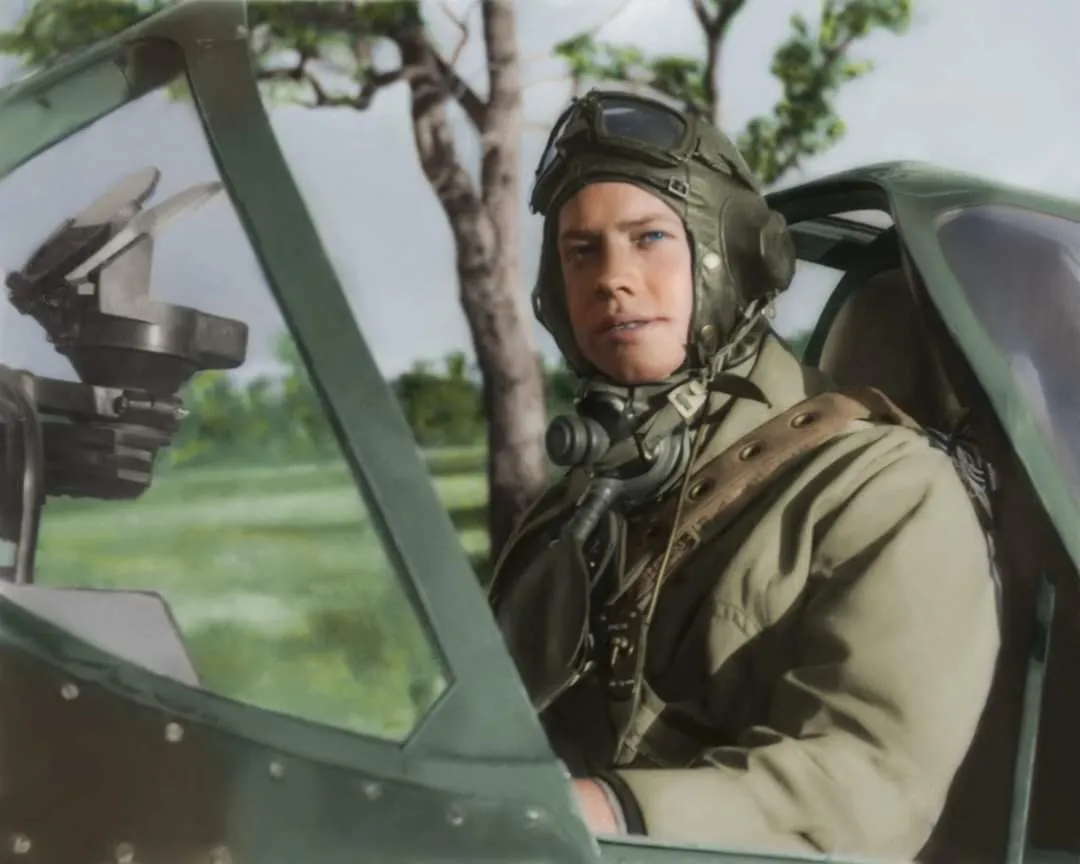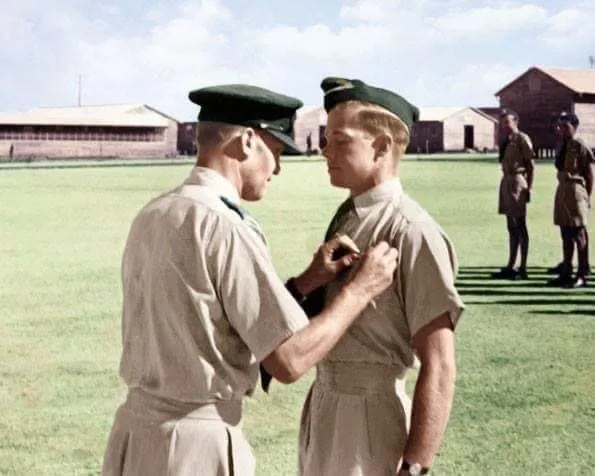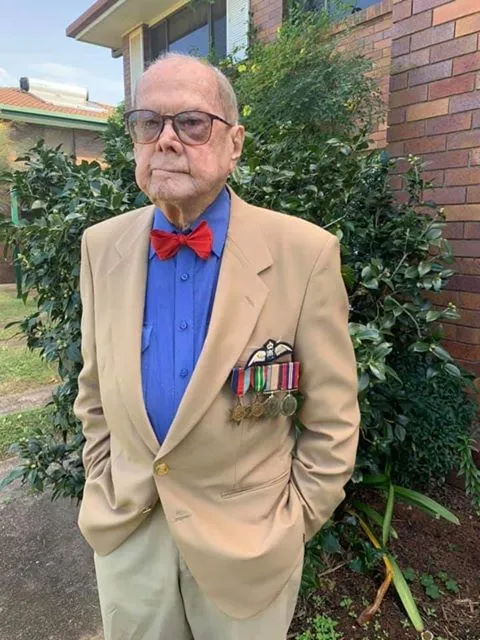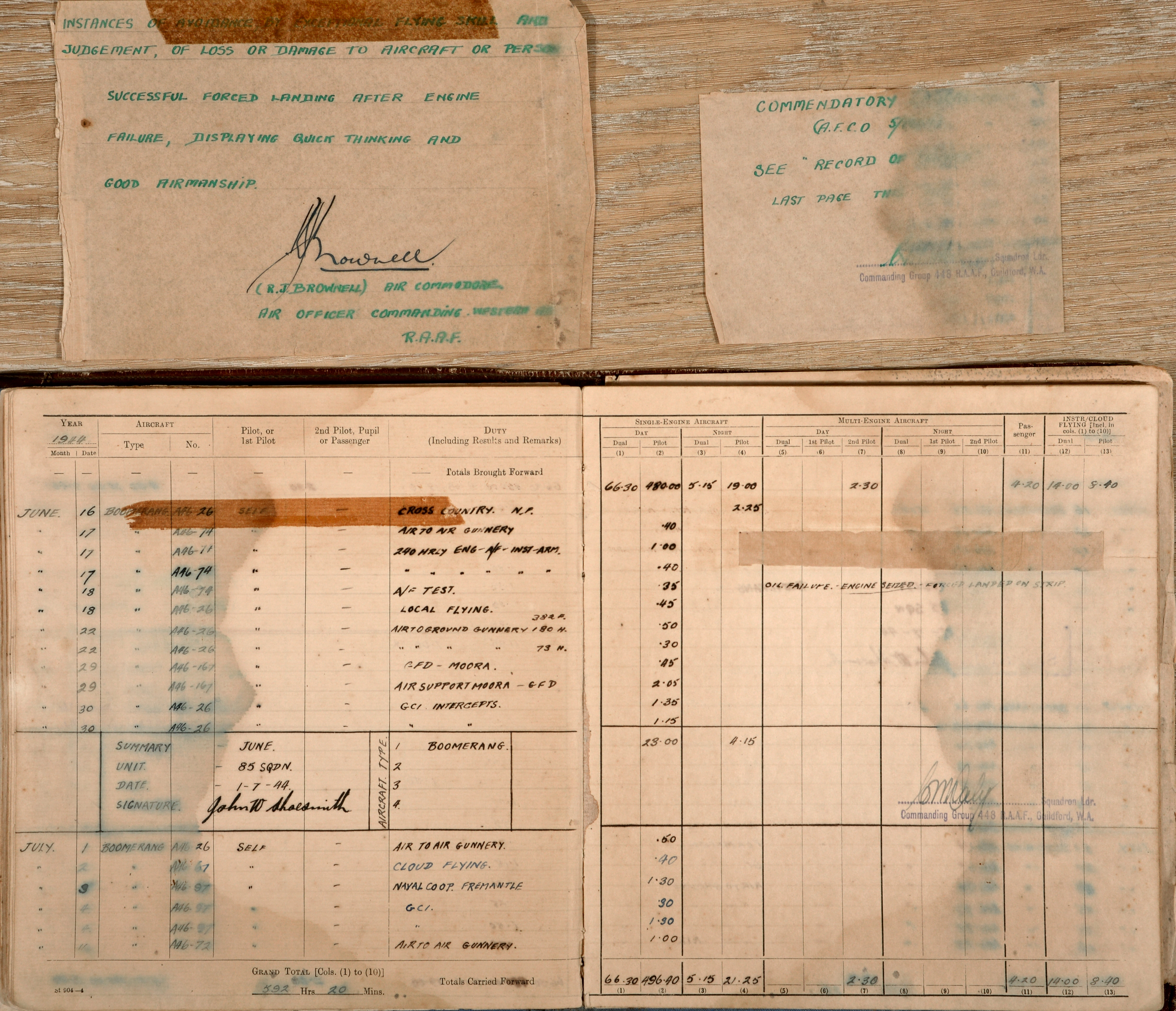WOFF John Walter Shoesmith 421404



| Squadron/s | 79 SQN 452 SQN |
| Rank On Discharge/Death | Warrant Officer (WOFF) |
| Mustering / Specialisation | Pilot |
| Date of Birth | 09 Aug 1923 |
| Contributing Author/s | Edited by Karen Paterson, from a recorded interview provided by grandson Jeff Short |
As we reflect on the service of Australian pilots and crew who were involved in the Battle of the Pacific, to Australia's north, it is with great sadness that the Spitfire Association bids farewell to Warrant Officer John Walter Shoesmith. John joins his fellow pilots in the 'squadron in the sky'.
The Shoesmith family advised us that John passed away in August 2024, aged 101 years and 13 days. The President of the Spitfire Association, Geoff Zuber, on behalf of the members and committee, send our sincere condolences to John's family and thank John for his service during World War II.
We are honoured to share John's story. We will remember him.
Lest We Forget.
This story is based on an interview that took place with John Shoesmith in February 2020. We have updated it with information provided by John's son, Ted Shoesmith.
During the war, John flew several different aircraft, starting with the Tiger Moth, before moving onto Wirraways, Boomerangs and Spitfires. His logbook is a rich history of his flying, and includes his experiences of night flying, ground strafing and convoy patrols. A photographic reproduction of John's logbook was printed in 2023 and a copy lodged with the National Library of Australia:
Royal Australian Air Force : flying logbook : name : Shoesmith, John (ISBN 9780645770735).
Like many of his compatriots, John also experienced some 'close calls' when flying. Once such example was when John completed a successful forced landing following an engine failure. John received a commendation from the Air Commodore, R. J. Brownell, Air Officer Commanding Western, RAAF for his 'quick thinking and good airmanship' in this situation.
On his 100th birthday, John was presented with a plaque and a quilt of valour. More on this story can be found at:
https://www.defence.gov.au/news-events/news/2023-08-10/spitfire-pilot-turns-100.
John trained at Temora, Uranquinty NSW and Mildura VIC under the Empire Air Training Scheme. Graduating from EATS Course No. 26 and receiving his wings in January 1943. He was assigned to operational duties with 85 SQN Western Australia, where he did his conversion training to fly the Spitfire MKV. He flew up to Borneo, Moratai and Merauke, protecting Australia from the war raging to our north. His experience, and the history of 85 SQN is reflected in the following books:
The Flying Inventor by Alan Mitchell, and
Empire Airmen Strike Back by Peter Ilbery.
Warrant Officer John Walter Shoesmith flew with 79 Squadron and 452 Squadron Royal Australian Air Force, flying both Spitfires and Boomerangs during 1943, 1944 and 1945. John started flying the Spitfire Mark V (A58-72) with 85 Squadron in Western Australia and then converted to the Spitfire Mark VIII, which was flown from Oakey to Borneo.
When asked was he excited when first flying a Spitfire, he responded with, " I was packin' my shit. I'd never flown a Spitfire before, and it is a very different plane to a Boomerang. I got in without any instruction, but I had a handbook on the seat".
This was not an unusual experience for many pilots during World War II, as planes needed to be taken to many operational aerodromes and there wasn't always the time to train every pilot who delivered them.
John Shoesmith not only flew his aircraft to Borneo, Merauke and Morotai for the air war on Australia's northern border, he was also involved in test flying Boomerangs and Spitfires.
On one occasion, John recounts a particularly harrowing test flight over Morotai, when he was asked to fly the Boomerang as high as possible to test a new engine and find out how high the fighter could be flown in the tropics. He remembers getting to 42,000 feet, at which point his breath was freezing in his mask and he started to get the 'bends'. The outside air temperature was minus 54 degrees Centigrade.
John talks about how his flight training kicked in. He immediately descended to 25,000 feet and waited until the symptoms had passed before landing safely.
On another occasion, he remembers flying in a formation of four Boomerangs south from Exmouth to Perth, in Western Australia when suddenly the pilot in number three Boomerang reported he was going 'to leave' as he had smoke pouring out from behind his dash panel. John watched the pilot jump out before the plane crashed. They safely picked up the pilot, on land, later.
John never underestimated the perils of flying fighters in the tropics, and the impact of poor weather on operations. One time, when flying a formation of 24 Spitfires from Oakey to Morotai (escorted by a Beaufighter and Catalina flying boat) John recounts how heavy cloud enveloped the whole squadron within minutes of flying over the Stanley Ranges. The pilots had to abandon the formation. All descended to 3000 ft, away from the mountains. Three of the fighters in the formation were involved in an accident. Only one of the three returned to Merauke with a severely damaged wing, from a rapid 600-mile dive back to base. Sadly, two pilots and their planes did not return. John and some of the squadron went up the Merauke River looking for the crashed planes, but they were never found.
The unexpected didn't only happen over the tropics. On two separate occasions John remembers having to make forced landings at Guildford.
The first was when he was test flying a Boomerang shortly after its 240-hourly inspection. When he increased the throttle at 7,000 feet, he noticed the oil pressure drop to zero. He throttled back to land, but the engine seized up at 1,000 feet. Despite this setback, John kept calm and managed to land safely.
The second occasion was when he was test flying a Boomerang that had just had its airframe inspection. When he went to lower the undercarriage, it would not go down. Despite this, John again managed to land safely, without wheels. This time he came into land on a golf fairway, which must have been a surprise for the golfers!
Despite the terrors of war, Aussie camaraderie and humour often helped the men get through and do their duty. This, and the antics John and fellow pilots got up to, have cemented lifelong friendships and provided some lighter moments, during the dark days of war.
One example of the Aussie antics up north was when John was asked if it was true that he, and other pilots, smuggled Johnny Walker Red whisky up to Borneo in his fighter plane. He laughed and said, " yes, and a case of gin and 24 bottles of wine. I sold it to a naval captain at the officer club for 10,000 guilders, which is about $2,000 dollars" .
John lived in Brisbane and is remembered by his son, daughter, thirteen grandchildren and nine greatgrandchildren who live in Brisbane, and overseas in Canada and USA. Thanks to Jeff Short (grandson) for his encouragement in preparing this profile and to Ted Shoesmith (son) for helping us to honour John's service through this profile and the link to John's logbook.
Empire Air Training Scheme - https://www.awm.gov.au/articles/encyclopedia/raaf/eats
Commonwealth Air Training Plan Museum/Archives/Barber's Book-Brandon Manitoba Canada https://airmuseum.ca/collections/archives/Barber's Book



